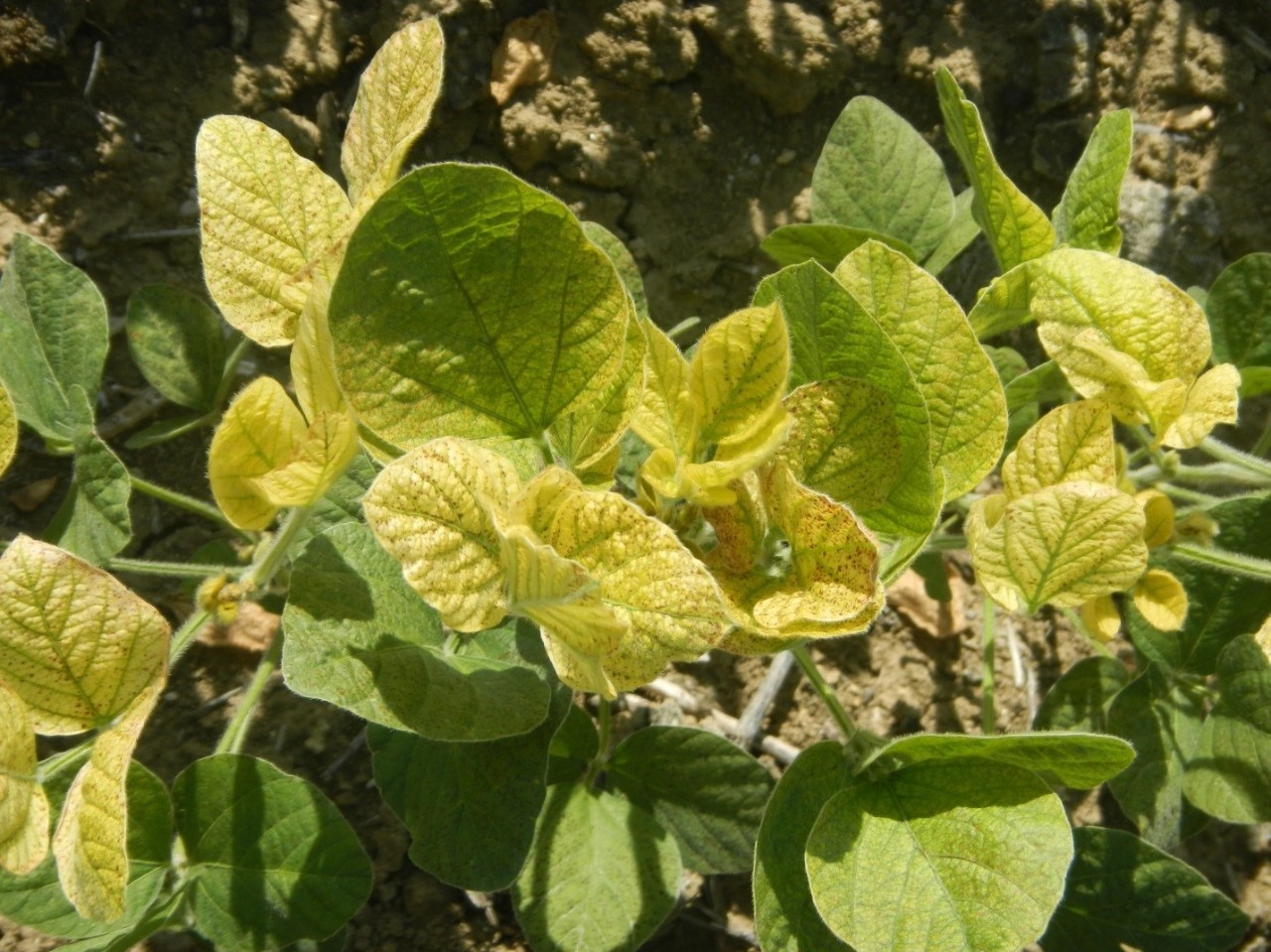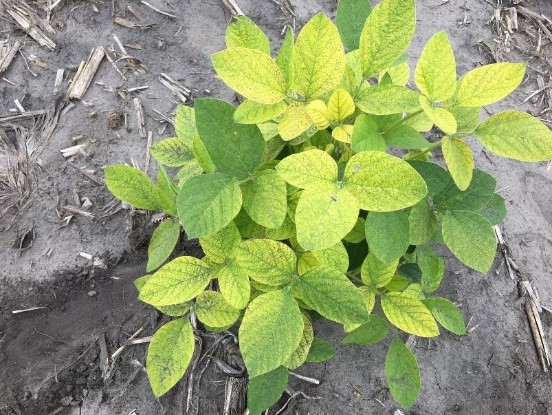Iron Deficiency Chlorosis in Soybeans
April 28, 2021
Agronomics / Background
Soybean Iron Deficiency Chlorosis (IDC) is caused by the plant’s inability to uptake iron from the soil and is common in soybean-growing regions where soils frequently have high carbonate, high pH and/or salinity. While there are isolated pockets of soil in all soybean growing geographies, common regions impacted include the upper Midwest, northern Great Plains, and Canadian Prairies. The distinctive yellow symptoms of soybean IDC often appear as soybean enters the first- to third-trifoliate leaf stage. IDC in soybeans is characterized by yellow leaf with green veins (interveinal chlorosis) in the newest leaves. In severe cases, leaves may die and fall off the plant, reducing the amount of plant tissue available for photosynthesis.
Conditions Leading to Iron (Fe) Deficiencies
Soil conditions that are more prone to IDC problems include:
- History of IDC in a field
- High calcium carbonate equivalents and high soluble salts as reported by a soil test. High calcareous soil typical have high soil pHs. Soil pH >7 also increase chances of IDC
- Soils pockets that remain wet, particularly in high clay content soils in cool conditions
- Residual nitrates from previous crops. Physiologically, when NO3−is taken up by plants, there is an increase in the pH of the rhizosphere (root zone) which can negatively impact iron (Fe) uptake
Soybean IDC risk potential based on soil carbonate content and salinity
|
Calcium carbonate equivalent (CCE) |
|||
|
Salinity (EC 1:1), dS/m |
< 2.5% |
2.6 – 5.0% |
> 5% |
|
less than 0.25 |
low |
low |
moderate |
|
0.26 – 0.50 |
low |
moderate |
high |
|
0.51 – 1.00 |
moderate |
high |
very high |
|
> 1.00 |
very high |
very high |
extreme |
Desired Iron (Fe) Tissue Test Values
Normal ranges for tissue test values are between 60 to 300 ppm iron during early growth stages for highly yielding soybean fields. The tissue test can show a high level of iron, even though the plants were deficient in iron. This is because the iron in the plant is in the Fe3+ form and iron in this form is not available to the plants.
Key Application Timings and Rates
- Apply BRANDT® SEQUESTAR® Fe 6% (Fe EDDHA) in-furrow at planting and or as a seed treatment. Fe EDDHA has excellent stability and performance in high pH calcareous soils.
- Foliar application of Iron can be useful for soybeans to correct mild deficiency or to boost iron tissue levels to prevent iron deficiencies. Foliar iron application are not very effective at managing severe iron deficiencies. BRANDT SMART Fe applied at 1 to 2 pts/acre is a good choice for foliar applications. Foliar applications are most effective if made during early vegetative stages every 7 to 14 days.
Soybean Iron Deficiency Pictures

Characteristic symptoms of iron deficiency chlorosis.
Credit: Dr. Bobby Golden. Mississippi State University.

Soybean plant with an IDC
(Credit: NDSU)
